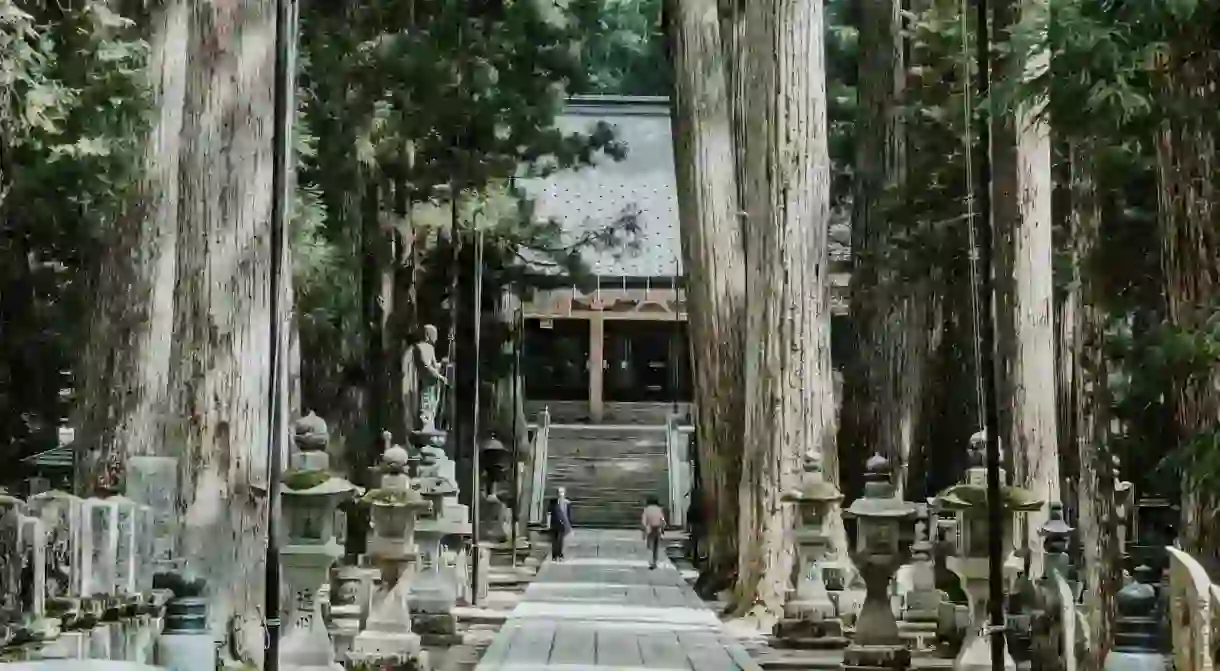Okunoin: The Cemetery of 20,000 Monks

Okunoin is one of Japan’s most sacred places. Located in the holy temple town of Koyasan, it is home to the final resting place of many of the nation’s most important historical and religious figures.
Koyasan was founded in 816 CE by a monk named Kukai. He created the town as the headquarters of Shingon Buddhism – a sect he himself started – and resided there for much of his long life. His writings and teachings earned him respect from many, including the Japanese imperial court. By the time of his death, he was so highly revered that even though his body was entombed in Okunoin, many believe that he lives on in a meditative state and continues to pray for the souls of those on earth right here in the cemetery.
Ichinohashi Bridge
Crossing this bridge allows entrance into the forest that surrounds the cemetery. Okunoin is the largest graveyard in Japan – it stretches over two kilometres and includes the graves of over 20,000 monks and other believers in Shingon’s teachings. A number of famed feudal lords are buried here as well, including Oda Nobunaga and Toyotomi Hideyoshi. Yet, the site isn’t creepy – it is one of the most gorgeous and tranquil places in the country. The stately trees and ornate tombstones truly take the breath away, allowing for quiet meandering and thoughtful meditation as visitors make their way through the trees.








Many figures watch over those who enter Okunoin, including the stout and friendly jizo statue. Jizo, which are ubiquitous at many Buddhist sites and along roads, are said to protect travellers. People dress them up to keep them warm.




Mizumuke Jizo
Visitors eventually make their way to these elaborate jizo statues, which they make offerings to and throw water at. These effigies also protect travellers as well as children and the souls of the dead. People pray to them for their lost loved ones.






Kobo Daishi’s Mausoleum
To enter the final resting place of Kukai – who was posthumously renamed Kobo Daishi – visitors must cross a bridge into an inner sanctum. This area is so sacred that photography is not allowed inside (the photos below were taken from the opposite side of the bridge). It is said that Kobo Daishi will remain in his enlightened state until the arrival of Maitreya, the future Buddha. Twice a day, monks take meals to Kobo Daishi. Only the most important monks are granted entry in the room where he resides. However, anyone can explore the rest of the stunning mausoleum, which includes a meditation room and a hall of lanterns. Only by visiting in person can you – whether you’re spiritual or not – truly grasp the ethereal feeling of this sacred place.

















